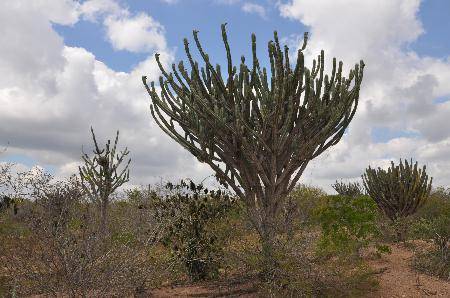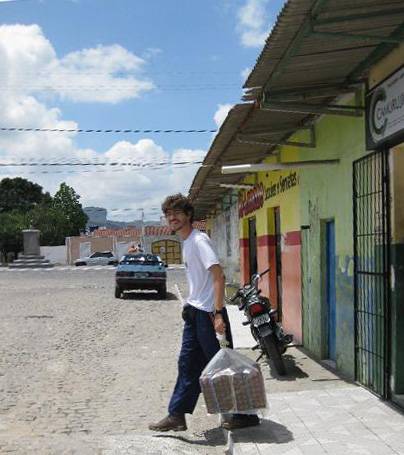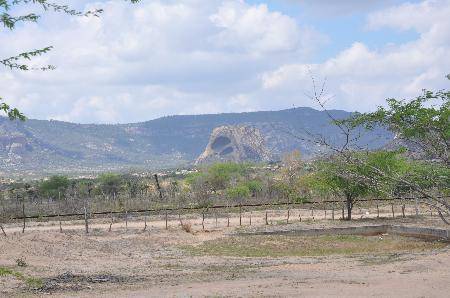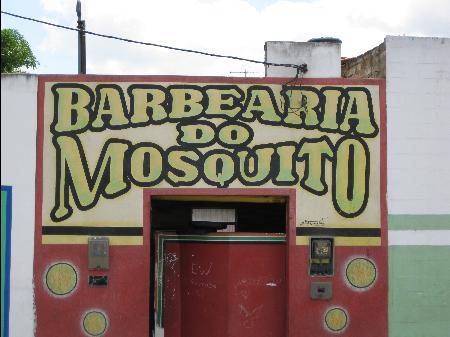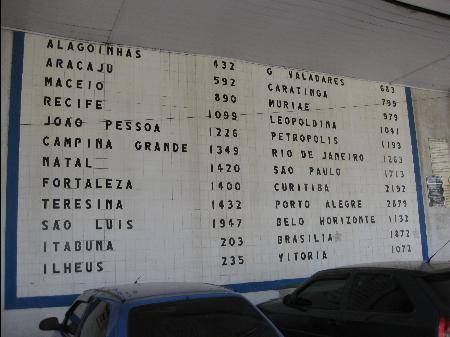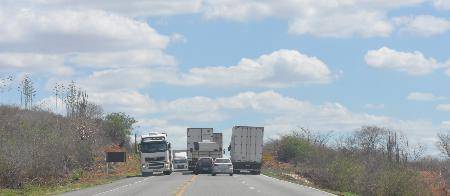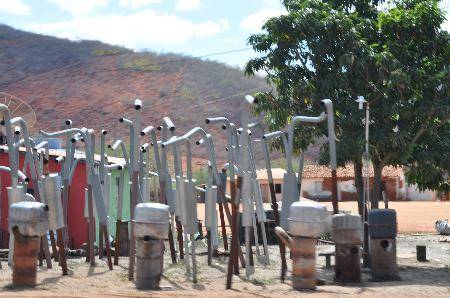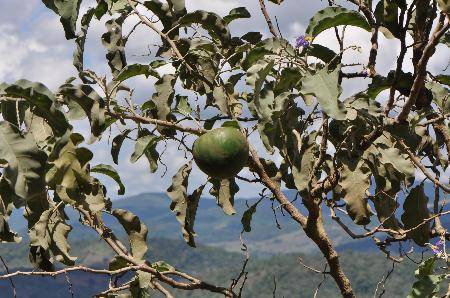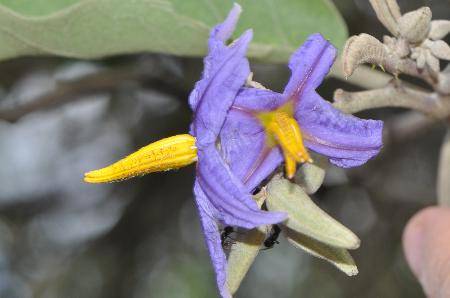After our great collecting in Bahia (even though we did miss seeing Heteranthia!) – it was time to go back to Belo Horizonte for the 64th National Brazilian Botanical Congress, where I would be giving the opening lecture. So we set off early to connect with BR 116 – the main road inland to the south.
The vegetation along the road out of the valley between the Serra da Jibóia and Serra do Timbo was completely different to the forest in which we had been collecting in the mountains – this is the caatinga – a dry forest dominated by spiny shrubs (often members of the pea family) and home to spectacular columnar cacti. I love this sort of habitat, it reminds of the western part of the USA, where I grew up – but it is hot and inhospitable for the most part, and here, in Bahia, there had been little rain for the last two years, so everything was tinder dry.
Cereus jamacaru, known locally as mandacarú, can grow to 5 metres tall; it is an iconic plant of the caatinga regions of Brazil and has some non-spiny varieties that are used as animal feed. The huge white flowers open at night and are pollinated by bats - it was one of the very first cacti to be widely cultivated in greenhouses in Europe, in the Museum Library there are some amazing paintings of this species that I used in my book Potted Histories (soon to be released as Flora in late 2014).
We left Lucas in the town of Itatim, which is surrounded by inselbergs, some with extraordinary caves. He will return home to the town of Feira de Santana, then come back south to Belo Horizonte a few days after us. We will pick up another student on the way in the town of Vitoria da Conquista, so life is never dull!
Lucas setting off to catch the bus to Feira de Santana, plants in hand – he was home a couple of hours later, while we were still on the road and far from our destination!
This inselberg (right in the middle of the picture) at the outskirts of Itatim has two huge caves on the side – it almost looks man-made, but isn’t.
This barber shop called to mind the insects from the forest, but also my entomologist colleagues back at the Museum – its name was the “Fly Barber”, must ask Museum fly curator Erica McAlister if flies often need a shave...
Our colleague from Argentina, Gloria Barboza, has found some new pepper species here near Itatim – but we had no time to stop, we had to get back to Belo Horizonte...
The distances in Brazil are huge – this wall in a truck stop along the way (whose name I have completely forgotten!) tells the kilometres to various places –it was a late lunchtime and we were still more than 1,000km from Belo Horizonte AC.
Even though the distances are large and it takes ages, driving is worth it – one sees the vegetation and habitats in a new way. I had never really understood what caatinga was before – I had seen it on herbarium specimen labels, but now I understand better what sort of habitat those plants live in.
The distance was complicated by the enormous amount of traffic on the hilly roads, and further still by roadworks all along the privately owned and operated highway. Every so often the traffic would be stopped in one direction when the road went down to a single lane; the lorries then backed up and when the road became two, or even miraculously three, lanes again there was a lot of quite frenzied overtaking. At one stopping place I counted 64 lorries all waiting to go…
When the opportunity to overtake presented itself everyone tried to go at once, but it all seemed to work out in the end, we didn’t see a single accident.
Along the road in small Bahian towns we often saw amazing displays of auto parts – Lynn called them “muffler art”. Wherever the traffic was stopped loads of people selling things ran up and down the queue – it was hot, so I suspect they were doing a booming trade in water.
Google calculated it would take us about 4 hours to get to Vitoria da Conquista to collect Cleiton, another student of Andre Amorim’s from Bahia, but instead it took us almost 8 hours! But we got there, and Cleiton was patiently waiting… Once we got into Minas Gerais the road got better and the lorries turned off. We stopped for the night more than 13 hours after we had begun… in a mining town called Teófilo Otoni.
This part of Minas Gerais is famous for semi-precious stones and the hotel lobby had cases of jewellery with tourmaline, agate and other nice local stones. The state of Minas Gerais has a huge mining industry (minas means mines in Portuguese) - mostly iron ore sent to China to make car parts that are then shipped back to Brazil for assembly. In Minas we saw many trains full of iron ore heading out to the coast. Along with the iron there are semi-precious stones, but only in certain placees. Our hotel was across from the main town party place, and it was a Friday night, so not a lot of sleep… but we had less than 800km to go.
We hadn’t stopped for any plants on our first day – so bad was the traffic and so far had we to travel. But once close to Belo Horizonte I couldn’t resist a stop to see Solanum lycocarpon – the wolf fruit. This species is related to Solanum crinitum, the species we saw on the road to Una few days ago, and has big purple flowers and green fruit. These fruit though are whoppers – up to 15cm in diameter – they are eaten by Amazonian maned wolves supposedly as a vermifuge (a medicine to expel intestinal worms).
This fruit was about 10cm in diameter and not at all ripe; once ripe the flesh is creamy yellow and smells nice, the seeds are very large and dark brown.
Solanum lycocarpon flowers have slightly curved anthers, just like Solanum crinitum - if you look closely you can see the hairy anthers characteristic of this group of solanums. Special sets of characters like this are clues about evolutionary relationships, but must be tested against other characters to be sure they are in fact indicators of relationship and not just superficial similarity.
As we drew nearer to Belo Horizonte it became obvious that it had rained a lot – in a couple of places the road had collapsed and the traffic was back to one lane. But we made it home by late afternoon. We had driven more than 1,500 kilometres – but it was worth it, the plants were fantastically interesting and we had found real treasures. Now comes the work in the herbarium checking the ones we think are new against previously collected samples. But first, we put the specimens to dry on the dryer at the university, and then got ready for the Congresso – the annual get-together for all Brazilian botanists and a truly great occasion! Now to get my talks ready...



